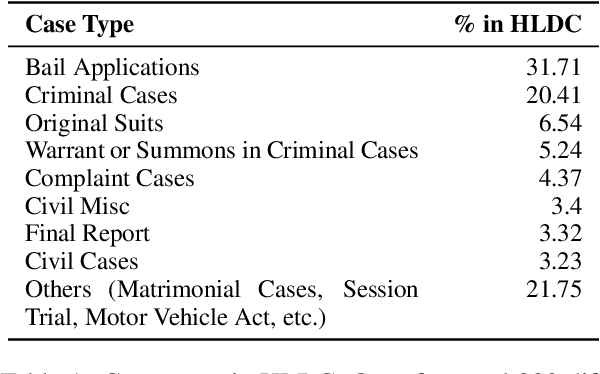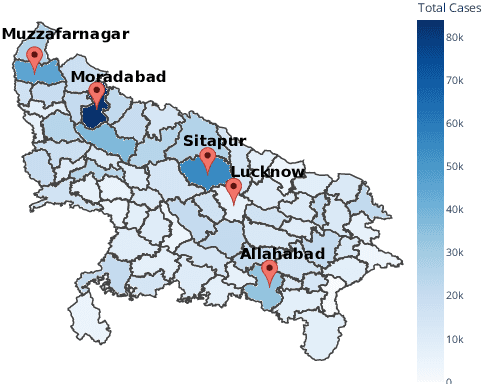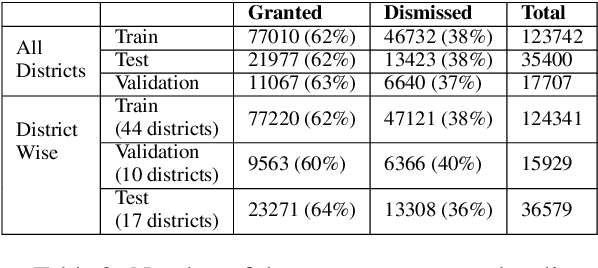Akshala Bhatnagar
HLDC: Hindi Legal Documents Corpus
Apr 02, 2022



Abstract:Many populous countries including India are burdened with a considerable backlog of legal cases. Development of automated systems that could process legal documents and augment legal practitioners can mitigate this. However, there is a dearth of high-quality corpora that is needed to develop such data-driven systems. The problem gets even more pronounced in the case of low resource languages such as Hindi. In this resource paper, we introduce the Hindi Legal Documents Corpus (HLDC), a corpus of more than 900K legal documents in Hindi. Documents are cleaned and structured to enable the development of downstream applications. Further, as a use-case for the corpus, we introduce the task of bail prediction. We experiment with a battery of models and propose a Multi-Task Learning (MTL) based model for the same. MTL models use summarization as an auxiliary task along with bail prediction as the main task. Experiments with different models are indicative of the need for further research in this area. We release the corpus and model implementation code with this paper: https://github.com/Exploration-Lab/HLDC
HashSet -- A Dataset For Hashtag Segmentation
Jan 18, 2022



Abstract:Hashtag segmentation is the task of breaking a hashtag into its constituent tokens. Hashtags often encode the essence of user-generated posts, along with information like topic and sentiment, which are useful in downstream tasks. Hashtags prioritize brevity and are written in unique ways -- transliterating and mixing languages, spelling variations, creative named entities. Benchmark datasets used for the hashtag segmentation task -- STAN, BOUN -- are small in size and extracted from a single set of tweets. However, datasets should reflect the variations in writing styles of hashtags and also account for domain and language specificity, failing which the results will misrepresent model performance. We argue that model performance should be assessed on a wider variety of hashtags, and datasets should be carefully curated. To this end, we propose HashSet, a dataset comprising of: a) 1.9k manually annotated dataset; b) 3.3M loosely supervised dataset. HashSet dataset is sampled from a different set of tweets when compared to existing datasets and provides an alternate distribution of hashtags to build and validate hashtag segmentation models. We show that the performance of SOTA models for Hashtag Segmentation drops substantially on proposed dataset, indicating that the proposed dataset provides an alternate set of hashtags to train and assess models.
 Add to Chrome
Add to Chrome Add to Firefox
Add to Firefox Add to Edge
Add to Edge